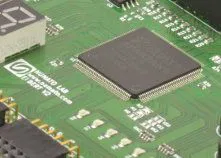Table of Contents:
People involved in hobby electronics are familiar with programmers for working with various memory chips, creating projects with microcontrollers and developing their skills. For programmers and hackers, memory programmers are a tool for modifying software and exploring various aspects of memory chips. Memory programmers are used to back up important data or restore memory contents in case of loss. They are key to better understanding the possibilities in the field of microelectronics.
What is a memory programmer?
Memory programmer
is a device or tool used to write, read, erase, and program various types of memory, such as Flash, EEPROM, EPROM, or RAM. Memory programmers are widely used in electronics, computer science and other fields where it is necessary to program or configure microcontrollers, microprocessors, FPGAs (Field-Programmable Gate Arrays), and other components.
Memory programmers can thus be found in electronics manufacturing, electronic repair, hobby projects, research and development, and many other applications where electronic memory needs to be managed and configured.
There are many different types of memory programmers that support different types of memory and communication protocols, so it is important to choose the right programmer for your specific task.
Memory programmers - CH341A devices
The CH341A is a USB interface chip that can emulate UART communication widely used in electronics and microcontrollers’ communication with other devices such as sensors, GPS modules, displays or computers, standard parallel port, memory parallel port and synchronous serial port (I2C, SPI).
We can use the CH314A programmer to program Flash memory, such as BIOS memory in computers, EEPROM memory and other types of memory in electronic devices. Its potential uses include repairing motherboards, restoring BIOS memory contents or changing software. Typically, programmers are connected to a computer via a USB port. You need to connect the programmer to the appropriate pins on the memory you want to program, and then use the software to transfer the data.
Software that manages read and write operations may vary depending on the hardware vendor. It is worth remembering that programming Flash memory or EEPROM can be risky, as incorrect operations can cause errors in the operation of devices. That’s why it’s important to follow the instructions carefully and avoid experimenting if you’re not sure what you’re doing.
Construction of the memory programmer
Evaluating information on the web is rather problematic, as you can find many sources, both reliable and less reliable on the subject of budget programmers. However, universal elements can be distinguished. We already know that memory programmer is usually connected to a computer via a USB port or other communication interface. This enables communication between the programmer and the computer, which is used to control the entire programming operation.
The memory slot or connector is where you insert the memory you want to program. Support means different types of sockets or connectors depending on the types supported. The electronics that control the programming, reading and erasing operation are based on a microcontroller or a specialized chip for this purpose. The power source is provided by a USB port, and otherwise by an external power supply.
CH314A Programmer's Manual
Connect
programmer
USB. Run the downloaded software. The next step is to install the drivers. After launching the CH314A programmer software, we select the memory we are working with from a side menu that allows us to navigate by type, model and manufacturer. We have command icons available:
- Open – open a *.bin or *.hex file from a location on the hard disk.
- Save – save the program buffer to the specified location on the hard disk.
- Fill – filling the buffer with the set constant value.
- Swap – swap bits in the buffer.
- Auto – execution of a sequence of predefined commands.
- Blank – checking whether the chip is erased (“clean)”; whether the memory is written with the value FF.
- Read – reading the contents of memory into the buffer.
- Program – uploading the contents of the program buffer to memory.
- Verify – comparing the contents of the program buffer with the contents of memory.
- Erase – deletes the contents of the memory.
- Exit – exit from the program.
Here it is possible to edit records and program using the Program option. The program buffer in the computer and the layout will be verified. Used in this way, you can use the programmer, among other things. for reading and restoring memory contents, updating device firmware, repairing by troubleshooting memory, copying data between memories, experimenting with memories for research purposes, testing and diagnosing faulty electronic devices, or carrying out hobby projects using microcontrollers and EEPROMs.
How useful was this post?
Click on a star to rate it!
Average rating 4.5 / 5. Vote count: 2
No votes so far! Be the first to rate this post.




















